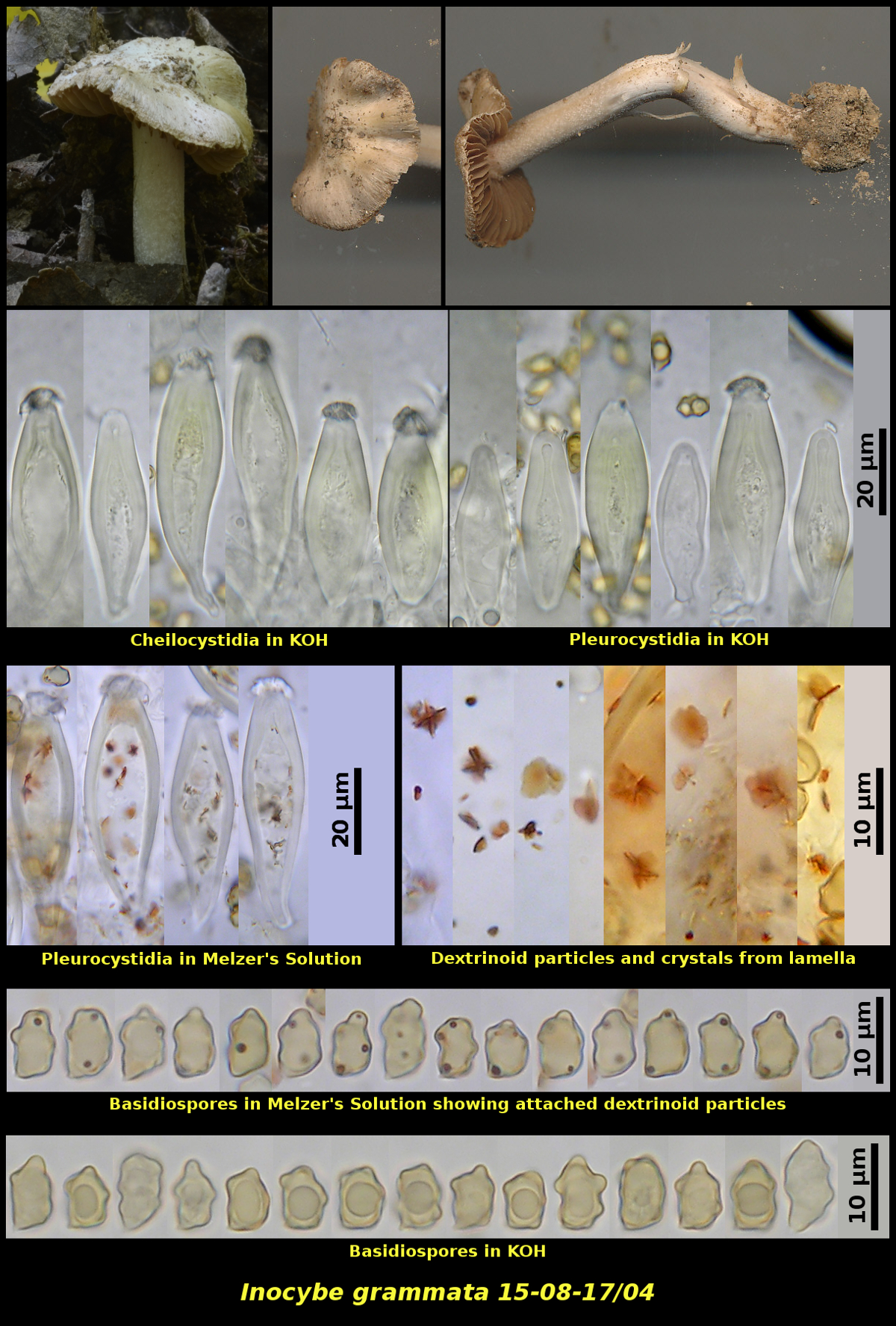Fleshy Fungi of New Brunswick >>
Inocybe grammata
Inocybe grammata Quél.

Solitary in soil at edge of a woods road, associated with Betula alleghaniensis and Populus grandidentata, Canoose Flowage Protected Natural Area, New Brunswick (15-08-17/04)
Basidiospores not successfully printed, nodulose, with nodules usually low and rounded but occasionally more prominent, in 3% KOH 6.6-10.6 X 4.7-6.4 μm, D/d = 1.28-1.84 (average[28]: 7.9 X 5.4 μm, D/d = 1.48), in Melzer’s Solution 6.7-9.2 X 4.6-5.8 μm, D/d = 1.32-1.77 (average[27]: 7.8 X 5.2 μm, D/d = 1.50). Cheilocystidia metuloid, ventricose, with a short stipe or non-stipitate, thick-walled, usually with apical crystals, slightly yellow in KOH, 44-64 X 14-22, D/d = 2.47-4.18 (average[13]: 51.2 X 16.1 μm, D/d = 3.23). Pleurocystidia abundant, similar to the cheilocystidia but less consistently with apical crystals, 37-53 X 12-16 μm, D/d = 2.92-3.58 (average[10]: 44.0 X 13.9 μm, D/d = 3.17)
Recognized by its pale brown to nearly white fibrillose pileus. The stipe is bulbous at the base and is dusted throughout its length by a fine pruinose covering. Although not very large, it is a rather solid, robust little mushroom. The fruiting body illustrated here is faded and probably a victim of dry weather, but when really fresh the pileus is light brown and the centre nearly white. Microscopically it is characterized by its thick-walled cystidia and basidiospores with low and rounded nodules.
When a piece of dried lamella is placed in Melzer's Solution it produces masses of bright red-orange (dextrinoid) crystals. These crystals are found loose among the basidia and cystidia but also appear to be contained within the cystidia. We have also found these crystals on material collected in Ontario and on the type specimen of I. albodisca (a synonym of I. grammata) from New York State.
Photo: D. Malloch (15-08-17/04).